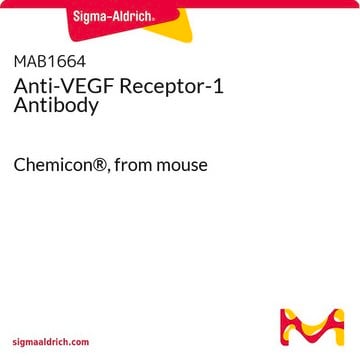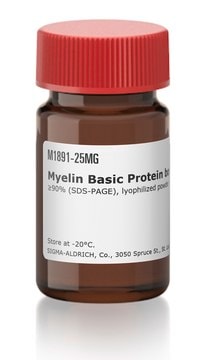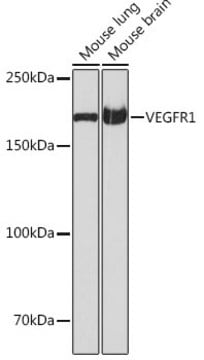V4762
Monoclonal Anti-Vascular Endothelial Growth Factor Receptor-1 antibody produced in mouse
clone FLT-19, tissue culture supernatant
Sinónimos:
Anti-Flt1 Receptor, Anti-VEGF R-1
About This Item
Productos recomendados
biological source
mouse
conjugate
unconjugated
antibody form
tissue culture supernatant
antibody product type
primary antibodies
clone
FLT-19, monoclonal
contains
15 mM sodium azide
species reactivity
human
technique(s)
immunohistochemistry (frozen sections): 1:100 using human placenta
immunoprecipitation (IP): suitable
indirect ELISA: suitable
microarray: suitable
isotype
IgG1
UniProt accession no.
shipped in
dry ice
storage temp.
−20°C
target post-translational modification
unmodified
Gene Information
human ... FLT1(2321)
General description
Immunogen
Application
- immunofluorescence labelling
- enzyme-linked immunosorbent assay (ELISA)
- immunohistochemistry
- immunoprecipitation
Biochem/physiol Actions
Disclaimer
¿No encuentra el producto adecuado?
Pruebe nuestro Herramienta de selección de productos.
signalword
Warning
hcodes
pcodes
Hazard Classifications
STOT RE 2
Storage Class
10 - Combustible liquids
wgk_germany
WGK 3
Certificados de análisis (COA)
Busque Certificados de análisis (COA) introduciendo el número de lote del producto. Los números de lote se encuentran en la etiqueta del producto después de las palabras «Lot» o «Batch»
¿Ya tiene este producto?
Encuentre la documentación para los productos que ha comprado recientemente en la Biblioteca de documentos.
Nuestro equipo de científicos tiene experiencia en todas las áreas de investigación: Ciencias de la vida, Ciencia de los materiales, Síntesis química, Cromatografía, Analítica y muchas otras.
Póngase en contacto con el Servicio técnico






